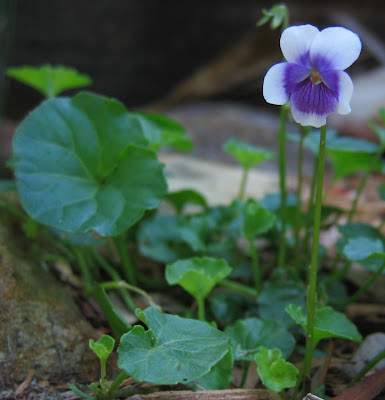True blue violets
There are 500 different kinds of Violet in the Northern Hemisphere. We have only a handful of Viola species native to Australia, but (as I discussed on radio a couple of years ago) the numbers are growing…
Viola banksii is a relatively new name for the native species we grow in our gardens. This species grows naturally from Batemans Bay to about Brisbane and was described in 2003.
The new name is perfect. Joseph Banks and Daniel Solander, fresh off the Endeavour, collected this tiny plant with its almost circular leaves and purple and white mottled flowers from Botany Bay in 1770.
Until recently we called our common garden species Viola hederacea, but this particular species has pale washed-out flowers and semi-circular leaves. It’s widespread from southern Australia north to Barrington Tops, but doesn’t seem to have made it into cultivation.
When I spoke with Simon Marnie in early 2007, another violet had been added to our flora. Viola silicestris – the species name referring to its predilection for sandy soils - has a similar range to Viola banksii, but you’ll pick this one by generally broad leaves and pale blue to violet flowers.
Or maybe you won’t. All these violets overlap a lot in there diagnostic characters, and if you only have a few leaves and a couple of flowers it will be difficult to identify them to species, even for an expert.
There are more new species, some named, others waiting for publication. It’s probably easiest to call them all violets for now, but do look out for the different coloured flowers and different shaped leaves – it’s subtle but they do represent some real diversity amongst the leave litter.
Image: 'a violet' from my home garden. *A story from the Radio Archives (Feb 2007)

Comments